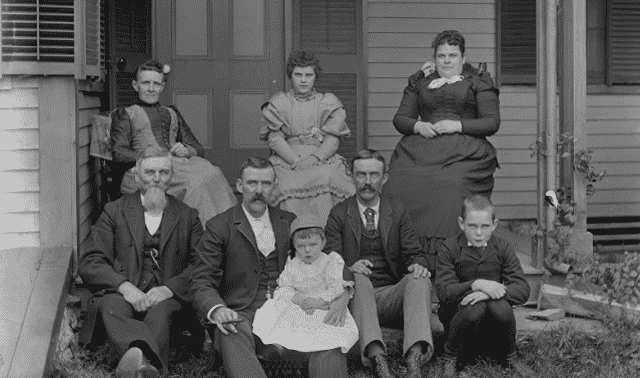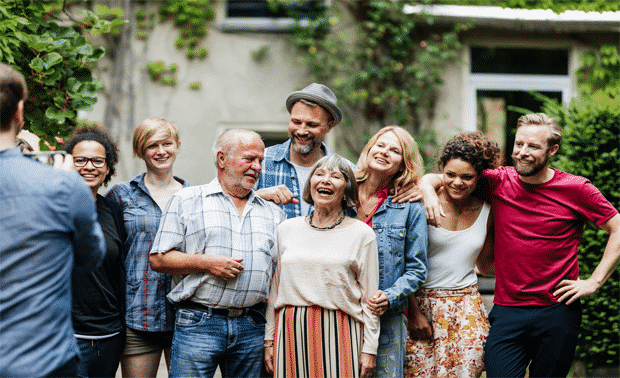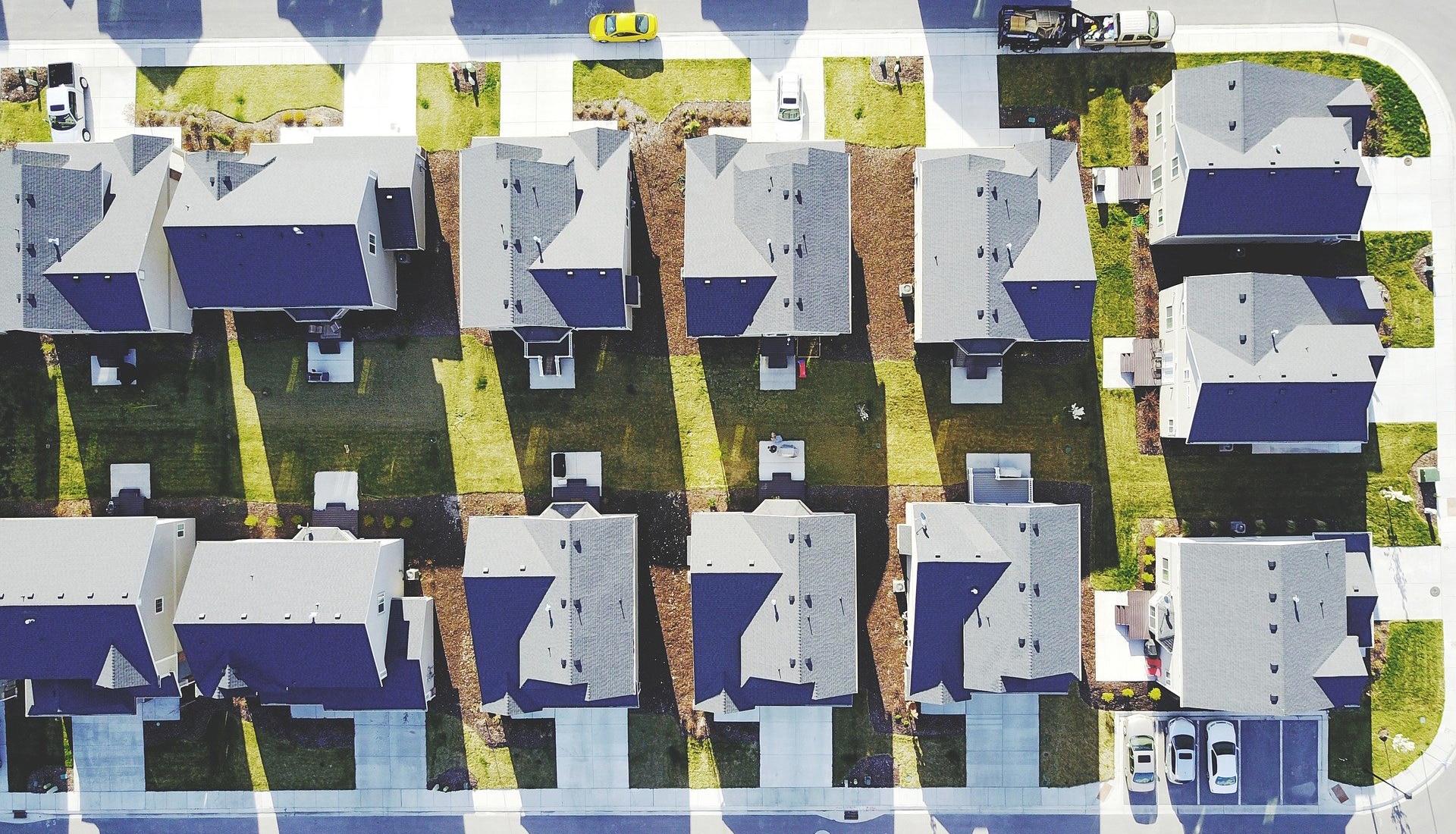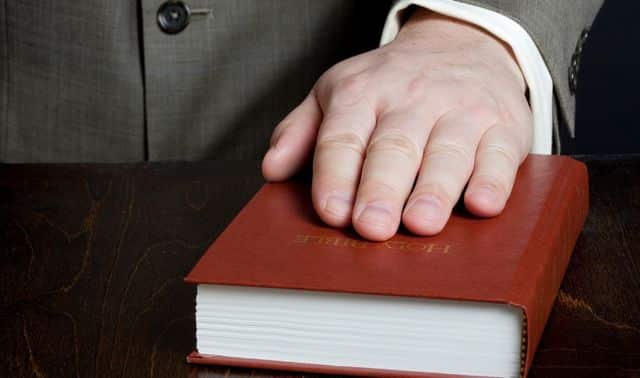Sign up for the Family Tree Newsletter! Plus, you’ll receive our 10 Essential Genealogy Research Forms PDF as a special thank you.
Get Your Free Genealogy Forms
"*" indicates required fields

“You may know a man by the company he keeps,” according to the English proverb. If Kitty Kelly were to write an unauthorized biography about you, she’d undoubtedly dig up dirt by questioning your best buddy, high school pals, neighbors and Facebook friends.
A similar approach can help when you’re confronting genealogical brick walls. In our ancestors’ day, it was common for folks to marry their neighbors’ daughters, migrate with relatives, and build new lives among relatives, friends and neighbors from their native lands. Genealogy experts recommend cluster genealogy—researching an ancestor’s friends and extended family—as an approach to solving stubborn research problems.
But like a good biographer, you’ll first have to figure out who was in your ancestors’ inner circle. Here are 11 sources you can time-travel to when tracking down your ancestors’ chums.
1. Neighbors
For decades, immigrants settled in the United States among people who spoke their language and shared the same cultural background. They found a sense of security in the communities they built. While many lived near their relatives, some put down roots among those they knew in the old country or who hailed from the same region.
An easy way to find out who your ancestors’ neighbors were: Check US census records, available every 10 years from 1790 to 1930 (with the exception of 1890—most of these records were destroyed after a fire). If the census lacks street names and address numbers on the left side, examine several pages before and after your ancestors’ listing looking for people with the same last name or from the same place.
You can access census records for free at FamilySearch, on subscription sites Ancestry.com and MyHeritage and on HeritageQuest Online (available through subscribing libraries). Your library may have the records on microfilm, as would a National Archives and Records Administration (NARA) research facility.
2. Witnesses at Major Life Events
Friends and cousins often were witnesses for each other during baptisms, weddings, naturalizations, land purchases and other important life events. They’d even serve as pallbearers at funerals and executors of wills. Examine the genealogical records you’ve already gathered for witnesses’ names. A good source for these kinds of records is FamilySearch.
For help finding these records, see articles in the Records category on FamilyTreeMagazine.com.
3. Church
Once they put down roots in a particular community, immigrants often founded their own churches. For example, Old St. Mary’s Church in Cincinnati was founded by German immigrants; Swedes established the Swedish Evangelical Lutheran Zion Congregation in Galveston, Texas, in 1892.
Records of baptisms, burials and marriages can often fill in the gaps when county vital records are unavailable. To see who worshiped in the same congregation as your ancestor, look for church member lists, tithing records, congregational histories (often published when a church celebrated an important anniversary), meeting minutes, church newsletters, and records pertaining to church-run schools or orphanages.
If you don’t know where your ancestors attended services, look for places of worship within a five-mile radius of your ancestors’ home—it’s likely he or she attended one of those. Old maps and county histories can help you with places of worship that existed during your ancestor’s lifetime.
For records requests, start by contacting the church itself; if it’s no longer in operation, contact the religion’s regional or national headquarters (see our church records toolkit).
4. Local Bars
Residents of my hometown, Duquesne, Pa., would joke about having “a church on every corner, and a bar on every other.” But just as churches gave new immigrants and others a place to gather, saloons and taverns offered a social outlet of a different kind. Work was monotonous, and saloons and taverns were an accepted place for workers to blow off steam.
But as community establishments, neighborhood taverns were more than just places for men to drink. They were a venue where locals could visit and share their complaints about company policy, discuss problems or politics, and play cards to escape their workaday drudgery.
In the early days, a tavern also functioned as a center of information and services—a place where the immigrant could get temporary lodging; find an interpreter or translator; have papers notarized; perform banking transactions such as obtaining credit, depositing savings, or sending a money order back home; and inquire about positions at nearby mines and mills. Such business was conveniently conducted in saloons and taverns because they opened early and closed late.
Family records and stories may reveal your ancestor’s favorite watering hole. Otherwise, check city directory business listings. You’ll find city directories online at Ancestry.com and MyHeritage; as well as on paper or microfilm at public libraries.
While records naming bar patrons likely won’t be readily available, you’ll occasionally find business account books at area historical societies. You’ll also want to search for the place in newspapers and local histories to learn about the goings-on and other patrons your ancestor may have been friendly with. Sites with newspaper collections include GenealogyBank, Ancestry.com, and Newspapers.com. For books, try Ancestry.com, HeritageQuest Online and the local library.
5. Schools
Our ancestors’ high school and college buddies were often friends for life. Scour your ancestors’ high school and college yearbooks for their pictures and any activities your ancestors may have participated in.
Note the names of fellow participants—Do they show up in any of your family records? If you’re lucky enough to have the yearbooks that belonged to your relatives, look for playbills, awards certificates, ticket stubs or other memorabilia tucked away in the yearbook’s pages. Check the pages and inside covers for signatures of friends.
Don’t have the original copy? Check libraries, museums and historical societies in the area where your ancestor lived. Subscription websites with historical yearbook collections include Ancestry.com and MyHeritage. You might even find a copy of the yearbook on eBay.
6. Sports Teams
Sports have always been a popular pastime, and for many of our ancestors, a welcome ticket out of the day-to-day drudgery of life on a farm or factory. Sports teams also provided a sense of camaraderie, where people used their talents and skills and worked toward a common goal.
My father played basketball for his high school team, then went on to play for fraternal organizations, work and even semi-professional leagues until hanging up his sneakers at age 47. Most of his buddies from the basketball court remained his lifelong friends.
Where you’ll find athletic records depends on the sport and level. For high school teams, use yearbooks (see No. 4). If your ancestor played baseball, start at Baseball Reference, where you can research nearly every major league player plus coaches and umpires back to the 1870s. If your African-American kin played ball, visit the Negro Leagues Baseball Museum. You can research players in the All-American Girls Professional Baseball League and the league’s archive at the Northern Indiana Center for History. For football, try College Football Stats and History and Pro-Football-Reference.com.
Did your ancestor play on a semipro or club team, or practice a more obscure sport, such as badminton? Run a Google search on the sport, plus a team name or a place. No matter what sport your ancestor played, newspapers can be a great resource—in addition to your ancestor’s name, search for names of teammates, the coach and the team.
7. Work
Your parents or grandparents likely spent 8, 10 or even 14 hours a day earning a living, and likely formed relationships with fellow workers in the foundry, store or labor gang. Census records can provide clues about an ancestor’s occupation, as can city directories. If your ancestor applied for a Social Security number, his application (called an SS-5) names his employer—see our article on Social Security records for tips on how to request it. WWI and WWII draft registration cards, available at FamilySearch and Ancestry.com, also name employers.
Ask living family members if they remember where your grandfather worked. Personal accounts and family stories often provide interesting tidbits. Search Google for the name of the company to turn up libraries and historical museums that may hold personnel or union records, company newsletters, disability claims, pension files, and other work-related documentation.
8. The Military
If your ancestor served his country, chances are his platoon or unit buddies held a special place in his heart. My father had a little black address book with the names of those he served alongside in the Navy during World War II. Dad also kept a diary and a scrapbook that document his wartime experiences and the stories he’s told me about his fellow service members.
Try to track down the names of others who served in your ancestor’s platoon or regiment. Your ancestor’s military records might mention their names, but you’ll probably find more information in a roster, unit history or website dedicated to the unit. Run a Google search on the unit he served in and history, and check the links here. For Civil War ancestors, check the Civil War Soldiers and Sailors System website, which has regimental histories. You can find rosters at Ancestry.com and published in book form.
9. Fraternal Benefit Societies
Fraternal benefit societies became popular in the late 1800s to offer insurance, financial aid and camaraderie to immigrants, who often were employed in hazardous industries. At the turn of the 20th century, these groups claimed almost 5 million members. My parents and grandparents, for example, belonged to the First Catholic Slovak Union, the Greek Catholic Union and several other fraternal lodges.
Start your search by asking your relatives whether their parents or grandparents belonged to such organizations. Also find out whether relatives have any fraternal society records; photographs of family members wearing special emblems on clothing or jewelry; or medals, pins, china or stationery with insignia. You also may see fraternal society insignia or initials in obituaries or on gravestones.
If the organization is still active, contact your ancestor’s chapter or the national headquarters to ask how you can view old membership applications, death benefit claim forms, meeting minutes and member newsletters or newspapers. If the organization shut down, officers may have turned over records to research repositories such as the University of Minnesota’s Immigration History Research Center or the Historical Society of Pennsylvania’s Balch Institute for Ethnic Studies—a Google search on the organization’s name, location and the word records will help you identify potential archives to check. You also might find microfilm copies of records at the FHL.
10. Social Clubs
Working people rarely met in each others’ homes for social activities, as the middle class did. Clubs offered a sense of belonging in the community.
For years, the Slovak Civic Federation (more commonly called the Slovak Club, or in my family, simply, “The Club”) is one of the places I will always remember from my time growing up in Duquesne. For decades, The Club was practically a second home for my father, uncles and countless other men. The “regulars” often stopped at the bar after work or gathered on Saturday nights for the 10 o’clock raffle. Weddings and Christmas parties were held there. In Duquesne, like many working-class towns, just about every ethnic group had its own meeting place: There was the Carpatho-Russian Club, Croatian Club and Italian Club, among others.
You may find that certain groups are still going strong in the place your ancestors settled. For example, in Pittsburgh, my Uncle Mickey belongs to the Ancient Order of Hibernians, founded by Irish Catholics—and his chapter has been active for more than 20 years. If your ancestor’s club is still around, contact the office and ask about old membership rosters and other records. If it has closed, a local historical society or library might’ve inherited its photographs, records, membership booklets and special publications.
Examine websites of local repositories, run a Google search and check Cyndi’s List for links to societies or groups.
11. Cemeteries
On cemetery excursions, always inspect stones near your ancestors’ graves: Folks often were buried near their relatives and friends, especially in church or small cemeteries.
Don’t rely just on transcriptions of tombstones, because not every family could afford a stone or an inscription. Whenever possible, look at the cemetery’s burial records. That’s how I discovered that a paternal cousin had been buried alongside my grandmother’s sister and her family. His name doesn’t appear on any tombstone, but the cemetery records show his burial location.
Don’t know where your ancestors are buried? Search cemetery database websites such as Find a Grave, BillionGraves, Interment.net and the Veterans Administration’s Nationwide Gravesite Locator. Also scour memorial websites such as Tributes.com or Mem.com and search Fold3 Memorial Pages, where users can add stories and photos about their ancestors.
From cemeteries to work to social clubs, following your forebears’ friends may just reveal where the answers about your ancestors are buried.
Bonus: 5 Tips for Cluster Genealogy
Now that you know all about your ancestor’s stomping grounds and who he hung out with, how do you use this information to your genealogical advantage? Follow these cluster genealogy tips:
- Follow your ancestors’ close friends and relatives. You might find your ancestor named in their records—perhaps he’s an heir in a will or he witnessed a naturalization—letting you add another date and place to your ancestor’s timeline.
- If you can’t find an immigrant ancestor’s passenger list or town of origin, search immigration records for names of those who belonged to his church, fraternal benefit society or social club, and for neighbors on the census who list the same home country. Your ancestor may have traveled on the same ship with one of those folks.
- Cluster genealogy may be the solution to a female ancestor’s missing maiden name. Our ancestors often married those who lived nearby, so study the records of a man’s neighbors and associates. You may discover your mystery woman was a daughter or sister of one of them.
- Can’t locate your ancestor in a census? In earlier and later censuses (as well as in other records), look for people who have something in common with your ancestor—maybe their parents came from the same country, or they shared an occupation as dressmaker or peddler. Your ancestor might have traveled, settled near or worked with those folks; research them, and you could find your kin.
- Try to trace the lines of your ancestors’ relatives and friends forward. Modern descendants who’ve been researching those families or communities may have new information about your family.
A version of the article appeared in the March 2011 issue of Family Tree Magazine.









